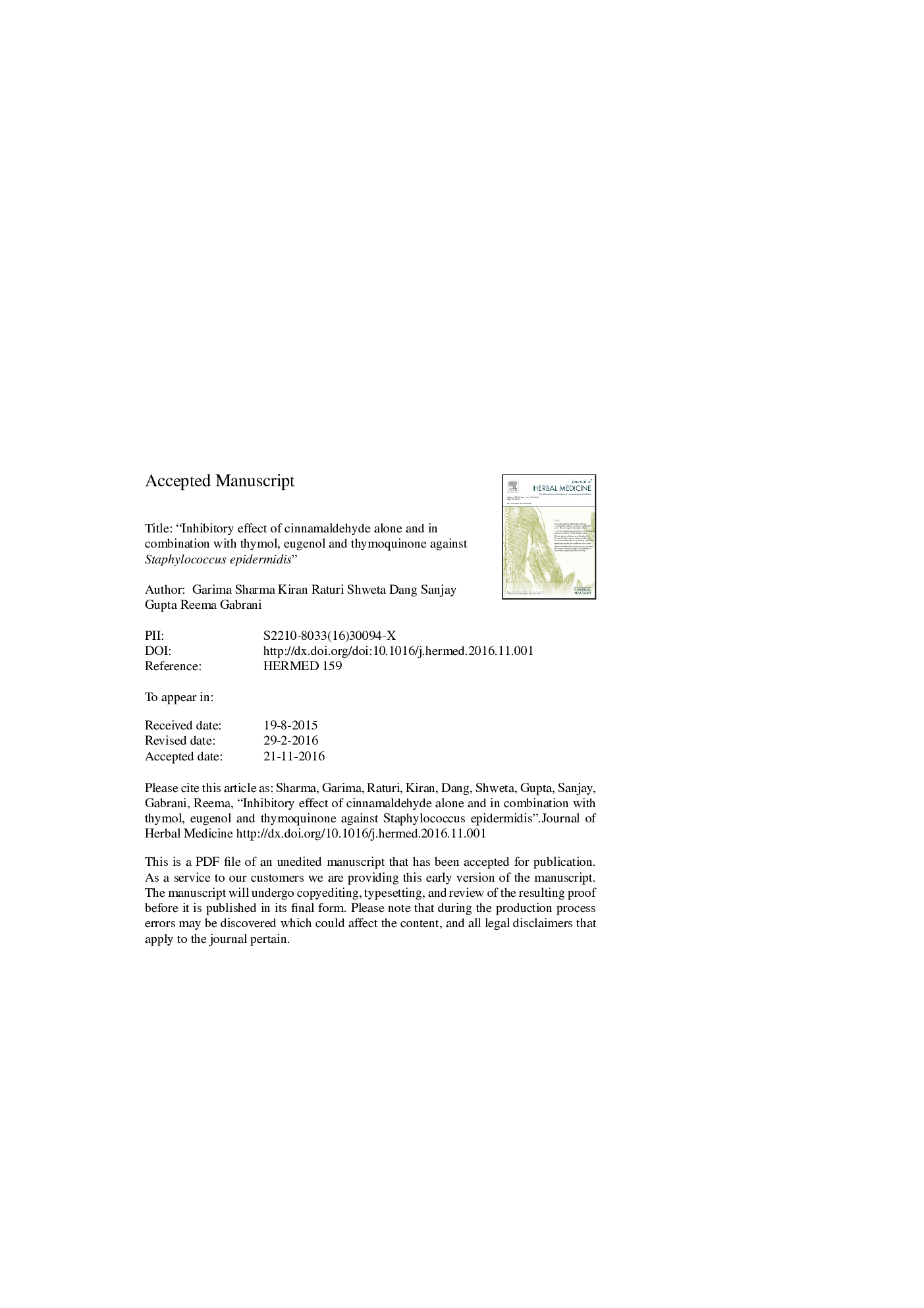| Article ID | Journal | Published Year | Pages | File Type |
|---|---|---|---|---|
| 8513003 | Journal of Herbal Medicine | 2017 | 27 Pages |
Abstract
Staphylococcus epidermidis has emerged as an important cause of nosocomial infections. These infections are very difficult to cure due to formation of persistent and recurrent biofilm, which decreases the susceptibility of bacteria to antimicrobial agents. Phytochemicals, especially in combination, can lower the dose of antimicrobial agent needed, reduce the toxicity and diminish the probability of developing resistance to microorganisms. The present investigation was undertaken to study the effect of cinnamaldehyde with other essential oil components (thymol, thymoquinone and eugenol) on the growth of S. epidermidis planktonic culture and its biofilm. All compounds used in the current study were found to be effective against the planktonic culture and biofilm of S. epidermidis. Thymol and cinnamaldehyde showed synergistic antimicrobial activity which considerably reduced the dose needed compared with cinnamaldehyde alone. Cinnamaldehyde in combination with other compounds showed time- and concentration-dependent enhanced bacterial membrane permeabilization as determined by β-galactosidase activity on Escherichia coli ML35p strain. Moreover, the synergistic combination was less cytotoxic on the vero cell line compared with cinnamaldehyde alone. The results of the current study indicate that cinnamaldehyde and thymol in combination can be effective against S. epidermidis planktonic culture and biofilm development.
Related Topics
Health Sciences
Medicine and Dentistry
Complementary and Alternative Medicine
Authors
Garima Sharma, Kiran Raturi, Shweta Dang, Sanjay Gupta, Reema Gabrani,
